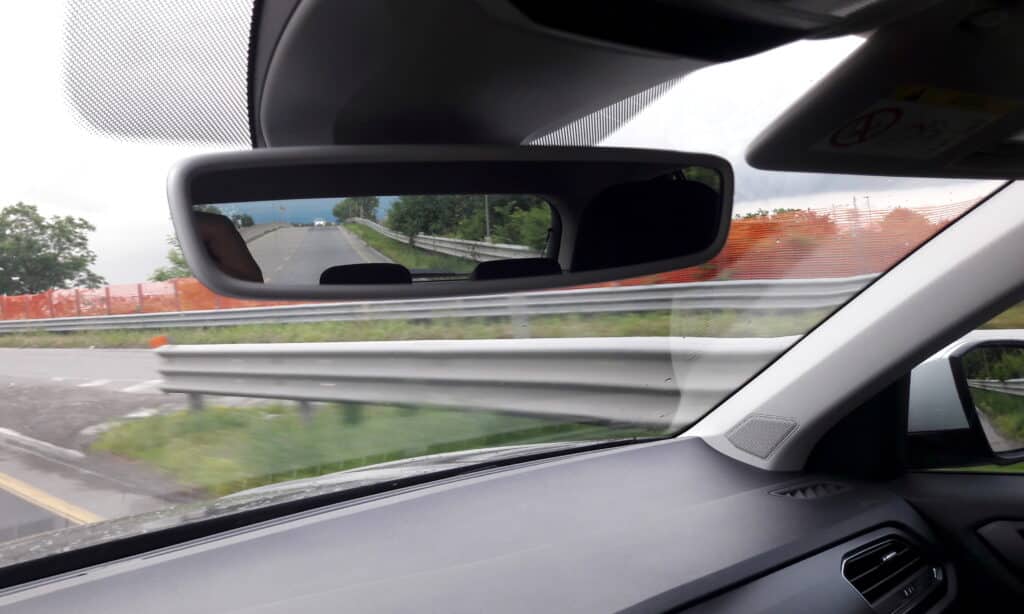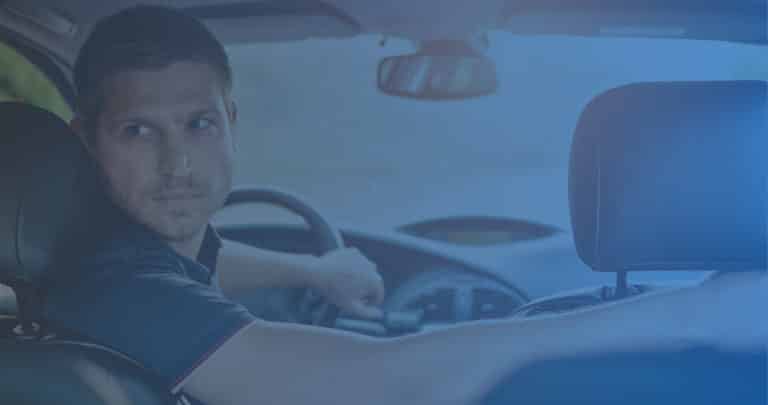What is windshield calibration? Windshield calibration, also referred to as windshield camera calibration, is a critical process that fine-tunes the positioning and aiming of your vehicle’s windshield camera sensors. This recalibration is essential for the precise functioning of Advanced Driver Assistance Systems (ADAS), including lane departure warnings, collision avoidance systems, and adaptive cruise control. Throughout this article, we dive into the nuances of windshield calibration and highlight its importance in maintaining your car’s safety features.
ADAS Windshield Background Info
To better understand why windshield calibration is vital, it’s best to start with ADAS. If you’ve seen a car commercial in the past few years, you’ve probably heard of ADAS features without knowing it. Features such as automatic emergency braking and lane departure warning, for example, are a staple of automaker ads. What exactly does this acronym mean and what does it entail? Here are the basics.
Advanced Driver Assistance Systems (ADAS)
ADAS is an acronym that stands for Advanced Driver Assistance System(s). This means ADAS is the term to designate automotive safety systems that employ cutting-edge technology like cameras and other sensors to help prevent an accident. These ADAS sensors provide warnings and even aid the driver in braking or steering to avoid hazardous circumstances for drivers, passengers, and pedestrians.
These technologies assist drivers in recognizing potential risks on the road so they can take appropriate actions. These systems consist of a variety of components that include cameras, radar, lasers, and other devices.
ADAS Cameras
Driver assistance systems using camera-based sensors assist the driver in being more attentive to their surroundings. Forward sensing ADAS cameras are mounted to the inside of a vehicle’s windshield, near where the rearview mirror is attached. Most automakers use one forward camera, but some use two, like Subaru’s EyeSight system. Cameras detect lane markings, road signs, and other relevant street information to detect hazardous situations ahead of time. The software then analyzes these images and determines what action is needed.
What is windshield calibration?

At this point, you might be wondering … what does it mean to calibrate a windshield?
Calibrating a windshield is actually the calibration of your ADAS-equipped vehicle’s camera that is mounted on or near the windshield. It’s not the glass itself that needs to be calibrated, it’s the camera.
Why does a windshield need calibration?
Once moved out of their initial position, ADAS cameras can’t re-calibrate themselves. That’s why professional calibration is necessary after windshield replacement and several other common service situations. Professional ADAS calibration ensures your windshield ADAS cameras are properly in place, with the right aim. ADAS calibration professionals use windshield calibration equipment to ensure various ADAS safety systems in your car work properly. This includes driver assistance functions like lane departure warning, collision avoidance braking (AEB), adaptive cruise control, and much more.
Overall, the windshield recalibration procedure adjusts and tests all the cameras and sensors attached to the windshield to ensure they function properly. The vehicle’s ADAS features may not operate correctly if they are not calibrated, leading to an accident.
How do you calibrate a windshield?
Windshield-mounted cameras require professional calibration with trained technicians using specialized tools in a controlled environment. Depending on your vehicle, calibrations can be static, dynamic, or both.
Static Windshield Camera Calibration
Static calibration is a process that adjusts the hard-coded values of specific components in your vehicle’s windshield-mounted camera. For example, this ensures cameras are at the correct height and makes sure to adjust to work correctly with other camera sensors on your car.
This phase of ADAS calibration requires specialized ADAS equipment and a variety of calibration targets (specific to OEM requirements) that the sensors must recognize to calibrate properly. To do so, the car must be at the correct distance from the targets and the proper height, among other things.
There are multiple methods for setting up ADAS tools, but this step must be done correctly every time to guarantee the most precise outcome.
Dynamic Windshield Camera Calibration
Dynamic calibration, or on-road calibration, since the bulk of the work takes place when driving. It begins in the shop with a diagnostic tool to identify which ADAS features are not in use, just like static calibration.
Then, the technician drives on roads with traffic and performs specific maneuvers. As a result, dynamic calibration ensures all your car’s safety features operate correctly when they are needed the most.
When is windshield camera calibration necessary?
In vehicles with forward-facing cameras, windshield recalibration is necessary whenever something happens to move a camera out of its original position. The most common vehicle repair requiring a recalibration of the windshield camera is a windshield replacement; however, many manufacturers now require a windshield camera recalibration after any serious accident or a wheel alignment.
When does my windshield need to be calibrated?
Several common circumstances call for windshield recalibration for ADAS, including the following:
- Windshield replacement
- Wheel realignment
- Suspension changes
- Camera replacement or removal
Car ADAS Calibration Solutions
At Car ADAS Solutions, we help our customers open ADAS calibration centers. For a custom calibration solution tailored to your business needs, trust the ADAS calibration experts at Car ADAS. We provide calibration solutions, including site certification, business planning, training, implementation, and continuous support.
Learn about owning a calibration center.
FAQ – Windshield Camera Calibration and ADAS Systems
What is windshield calibration?
Windshield calibration involves the recalibration of windshield-mounted cameras in a vehicle’s Advanced Driver Assistance Systems (ADAS). It ensures the accuracy and functionality of various driver assistance features.
How do ADAS cameras work?
ADAS cameras, typically mounted near the rearview mirror inside the vehicle’s windshield, detect lane markings, road signs, and relevant road conditions. They capture images, which are then analyzed by software to assess potential hazards and recommend appropriate actions.
How is windshield calibration performed?
Professional technicians perform windshield calibration in a controlled environment using specialized tools and equipment. There are two main methods: static calibration, which adjusts hard-coded values, and dynamic calibration, where on-road maneuvers ensure that safety features work correctly.
When is windshield camera calibration necessary?
Calibration becomes necessary when something moves an ADAS camera from its original position. Common instances include windshield replacement, collisions and accidents, wheel alignments, suspension changes, or camera replacement/removal.







